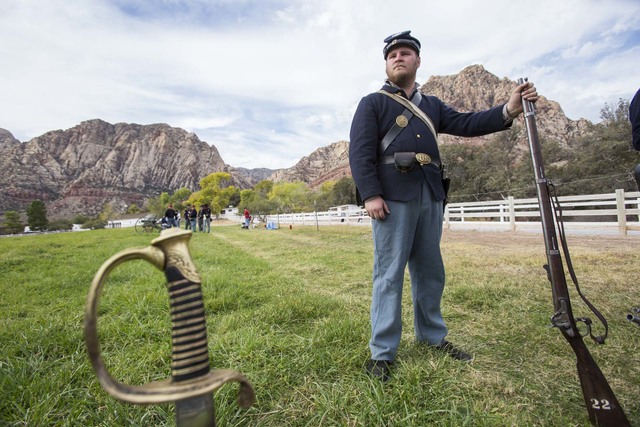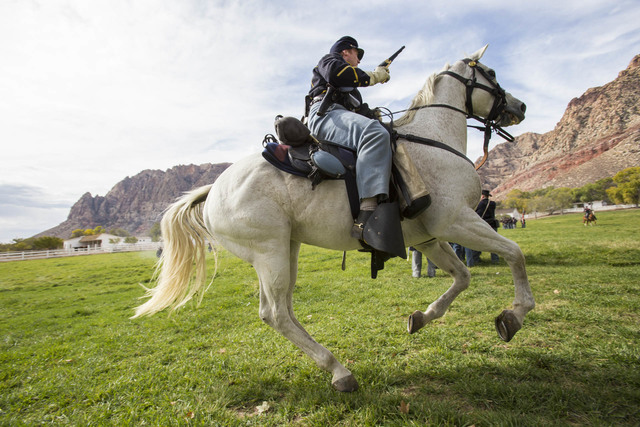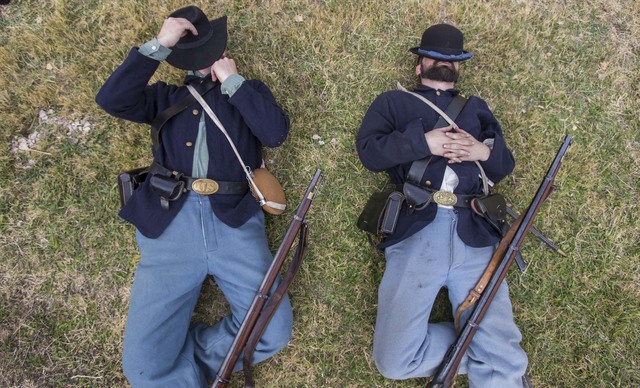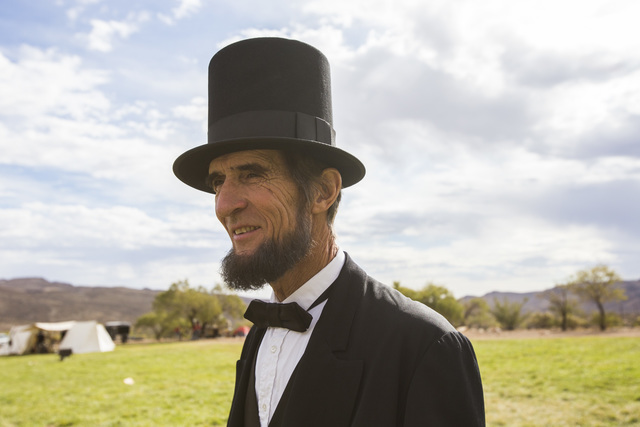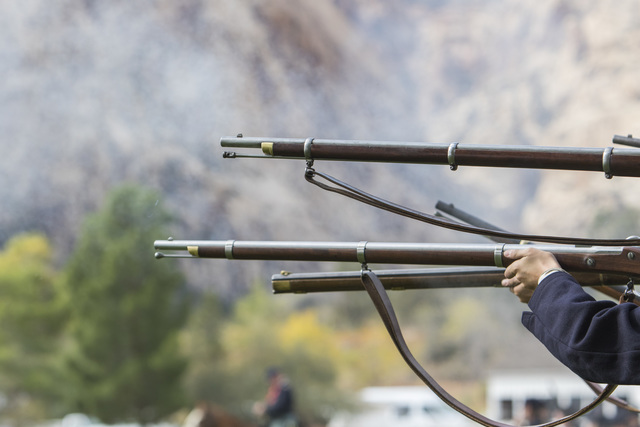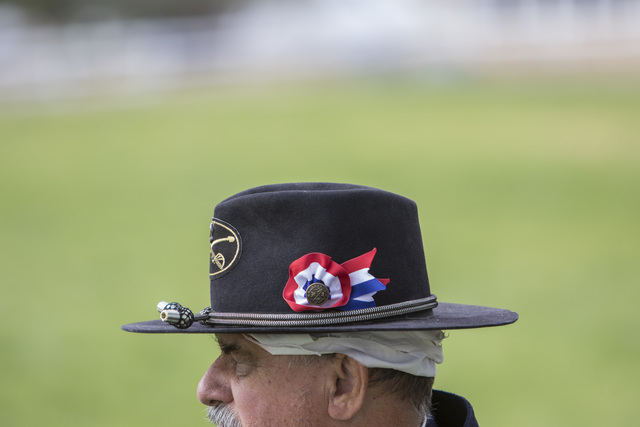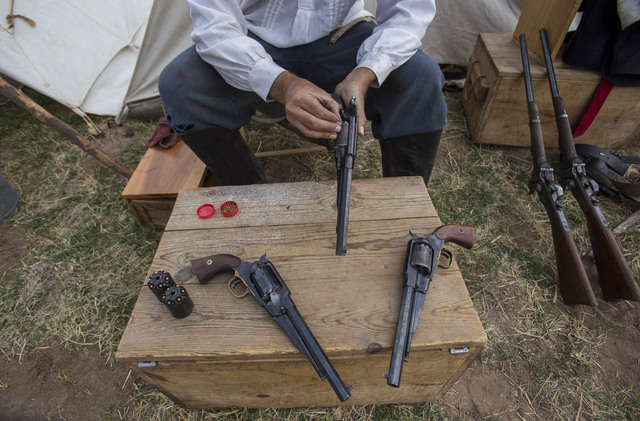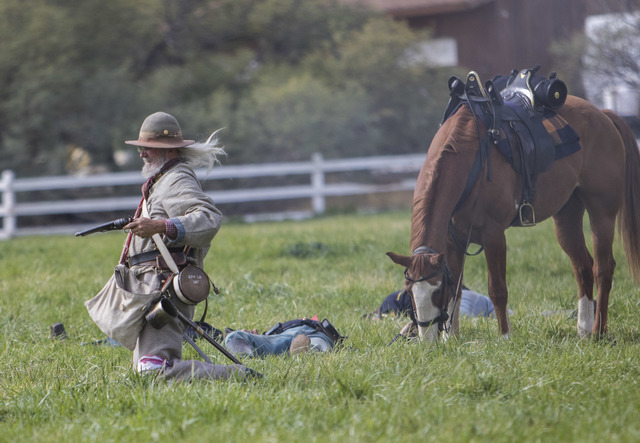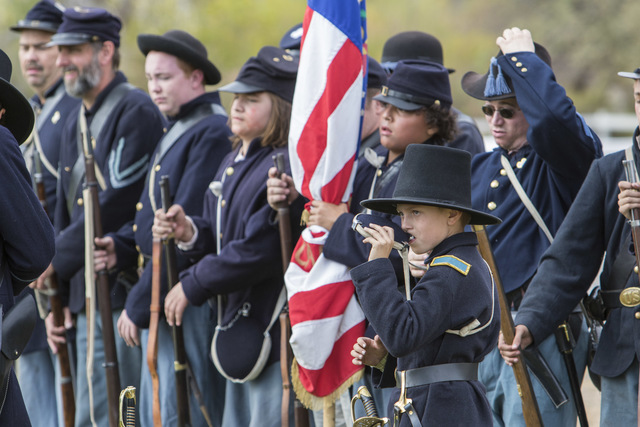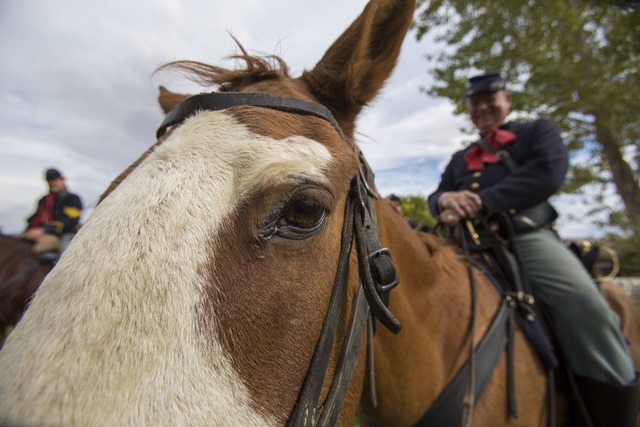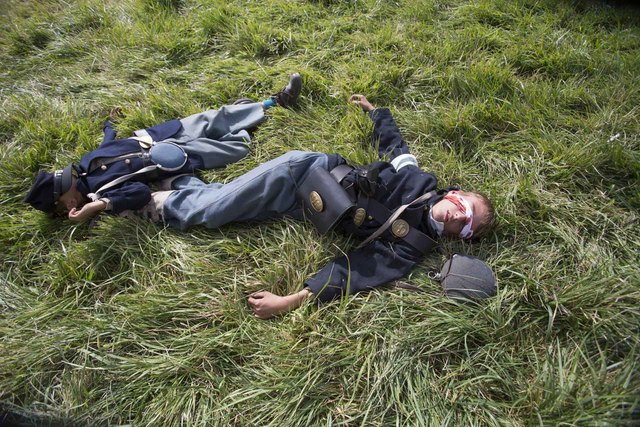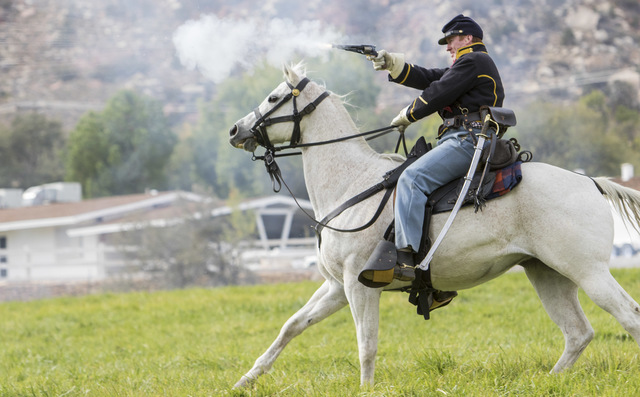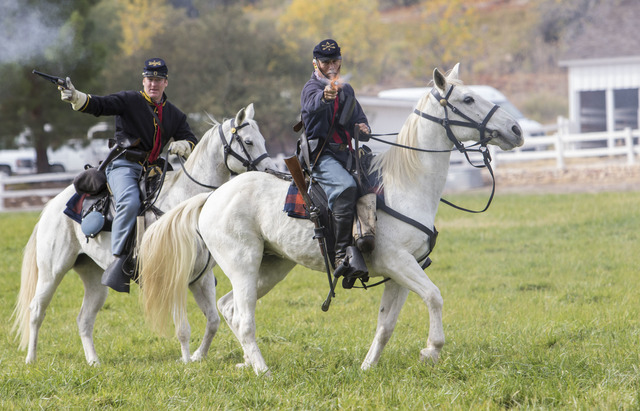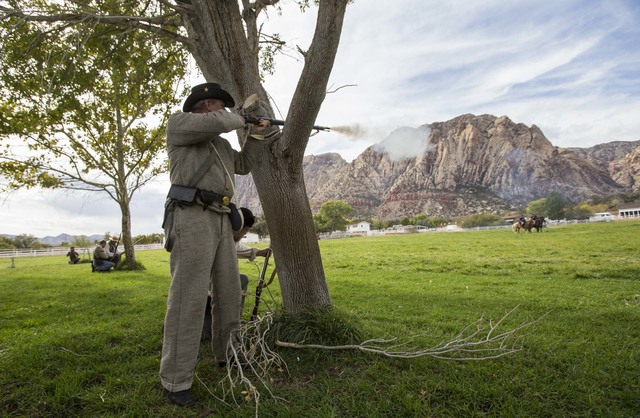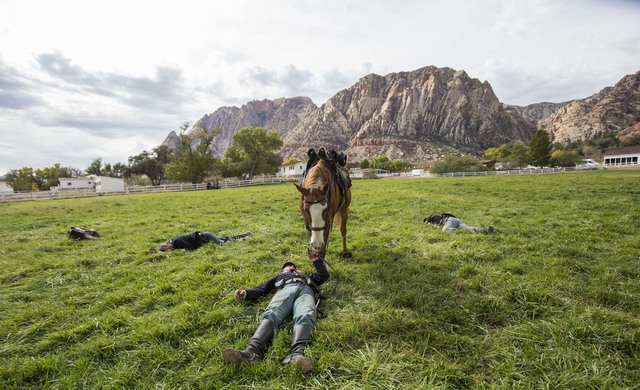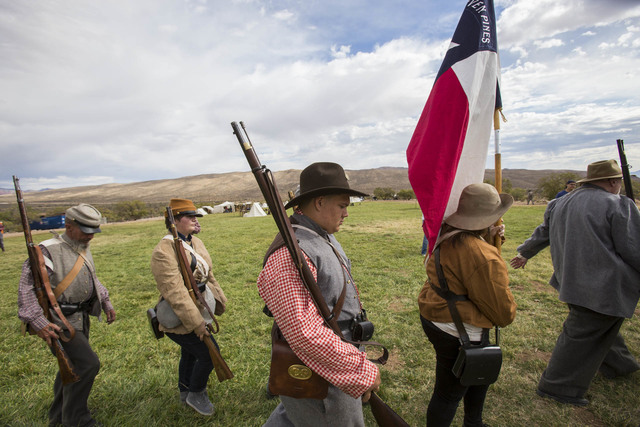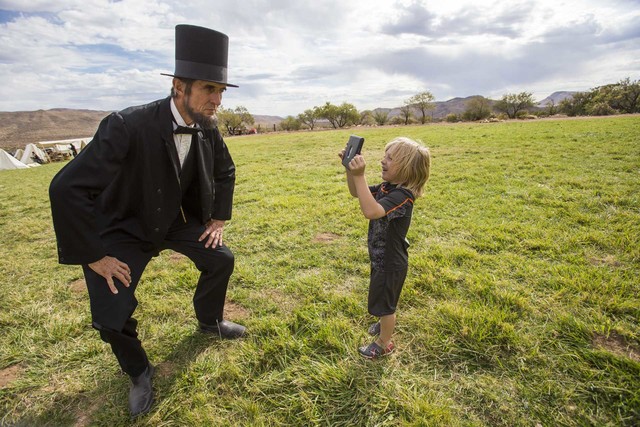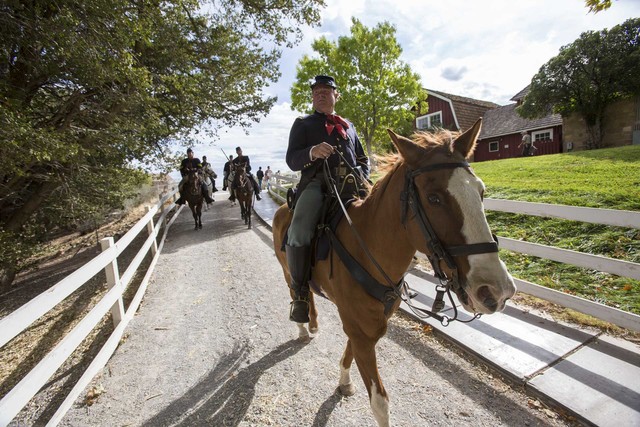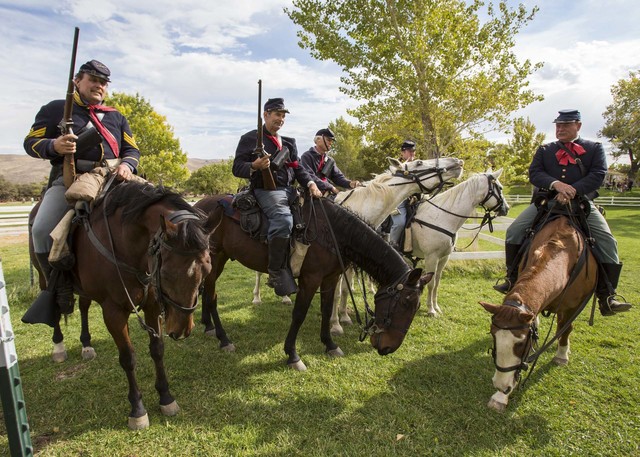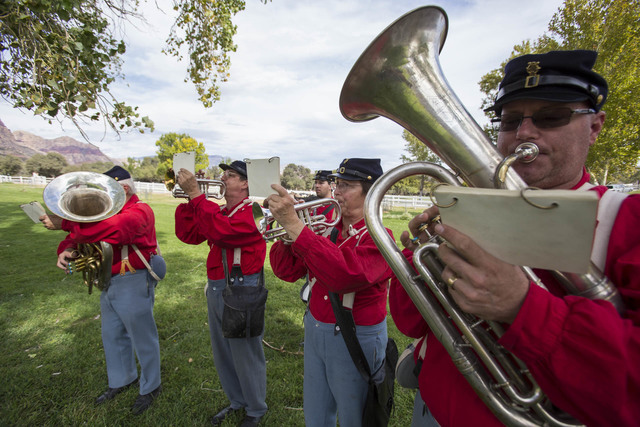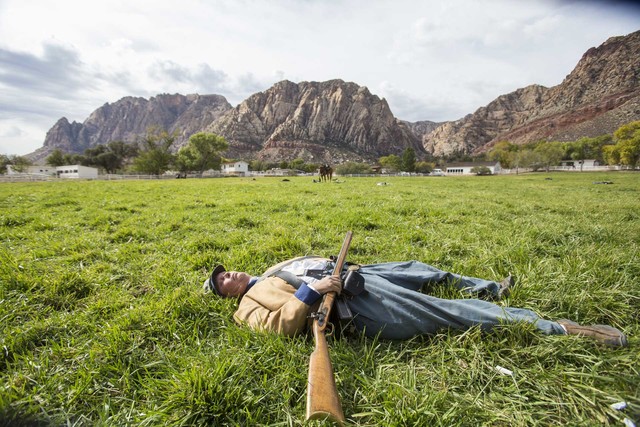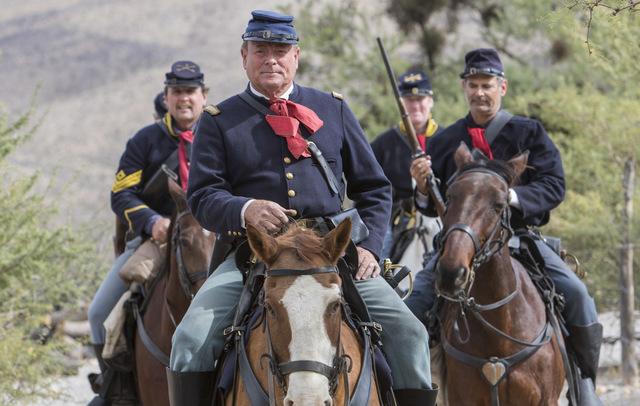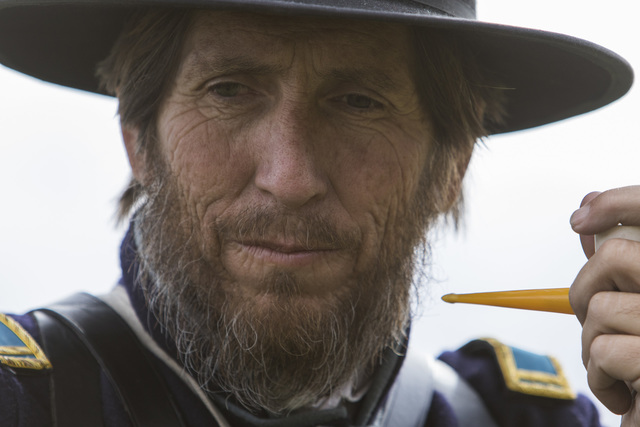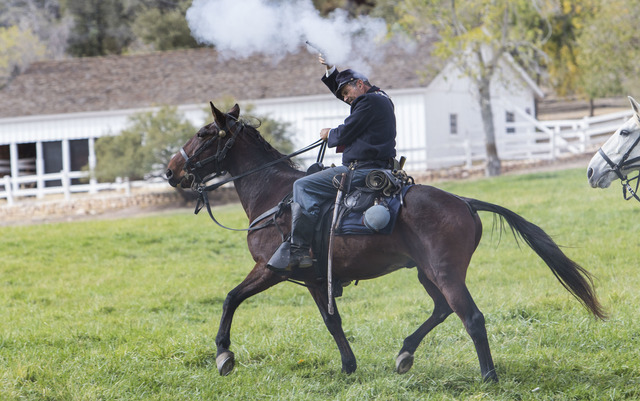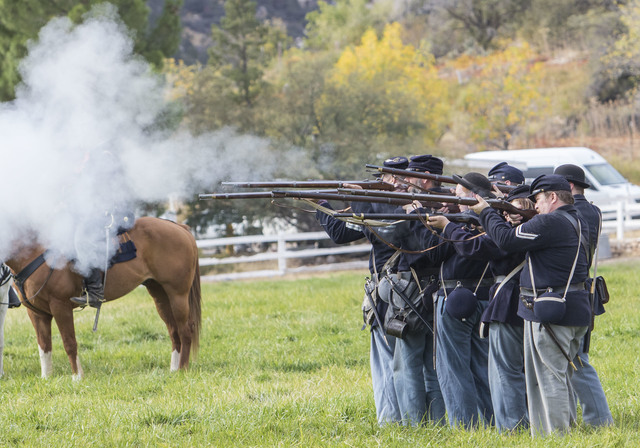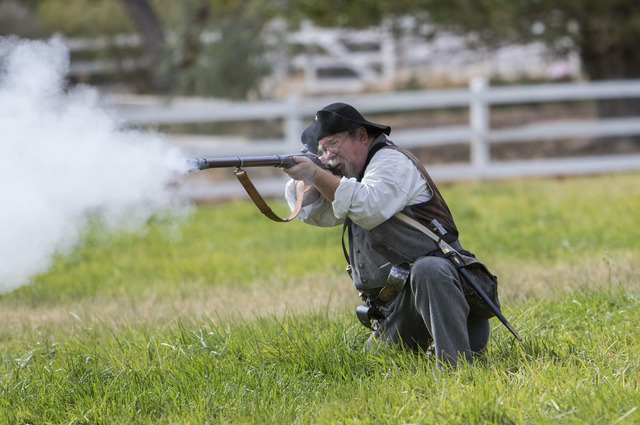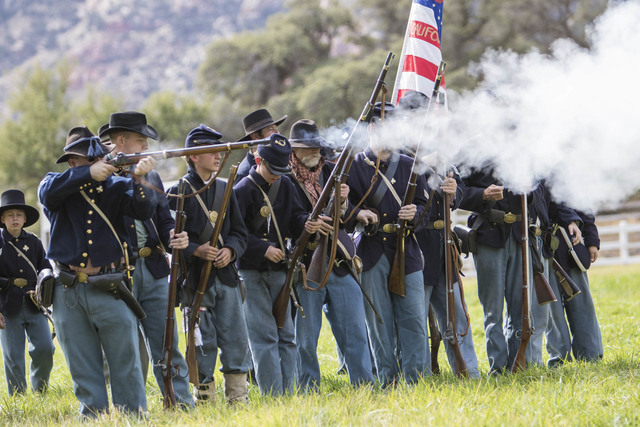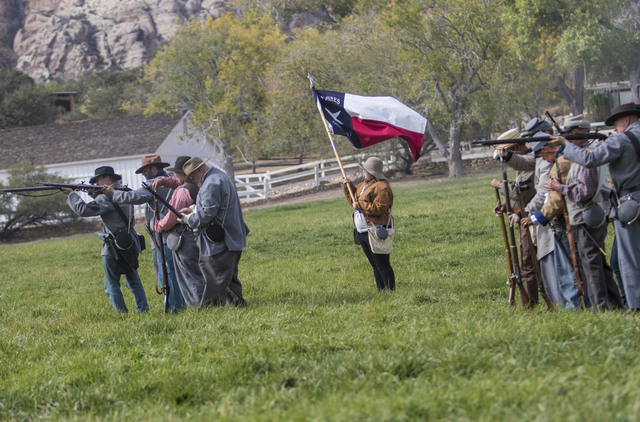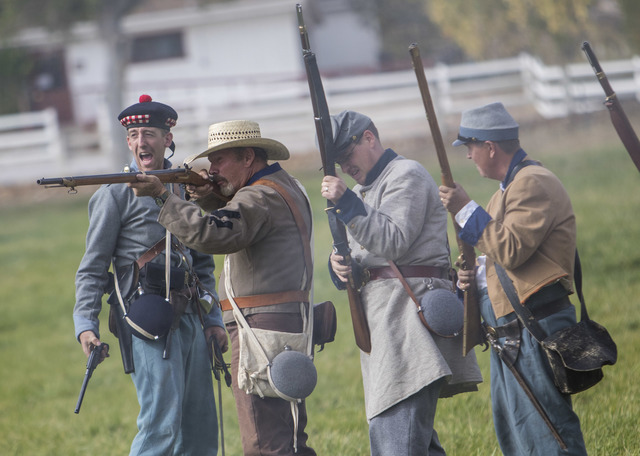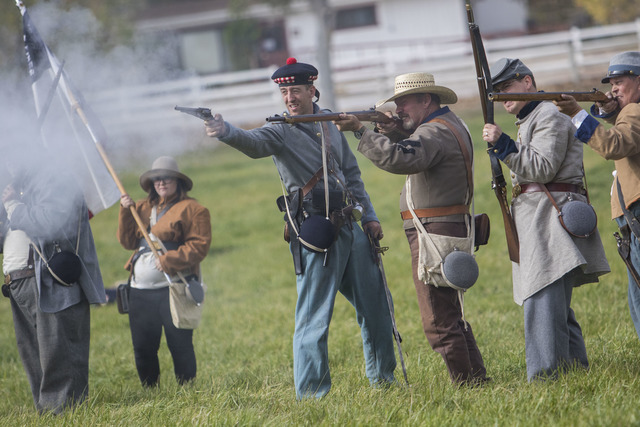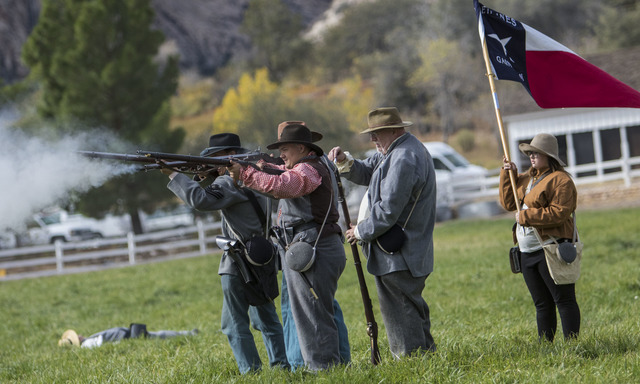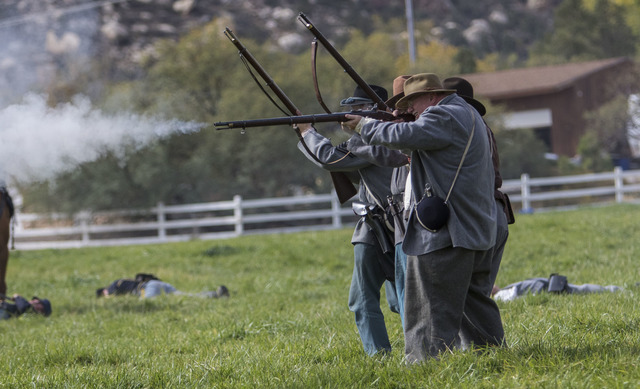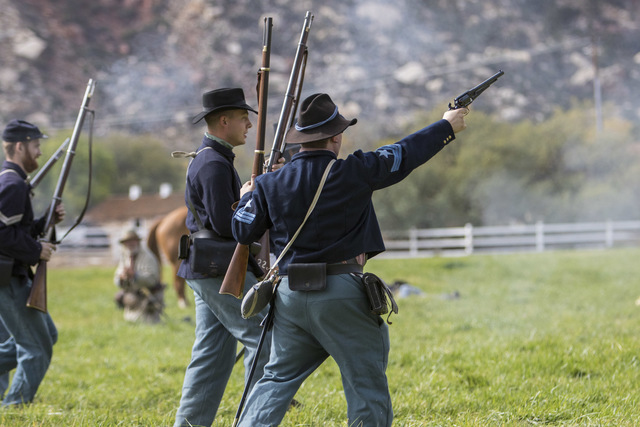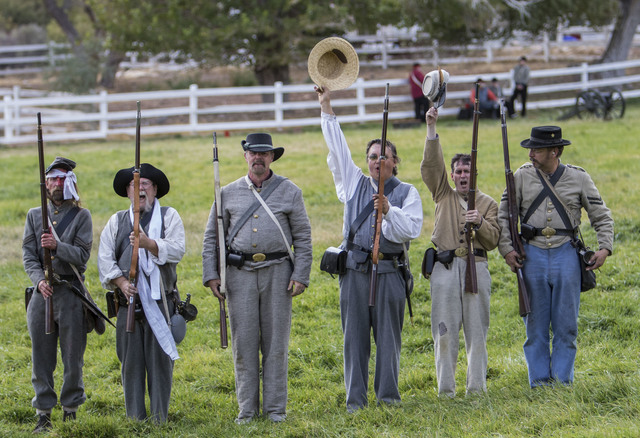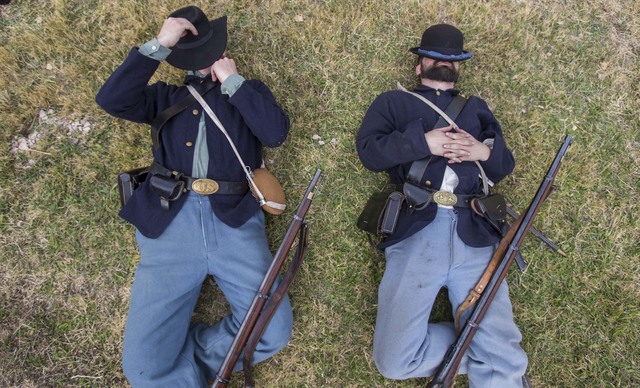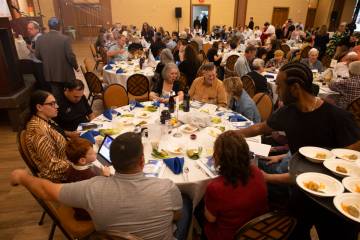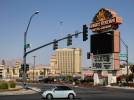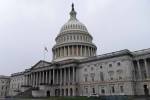Civil War buffs from around West relive history at Spring Mountain Ranch
Long marches. Tattered uniforms. Few supplies.
Re-enactors from Nevada and several surrounding states demonstrated Saturday and Sunday at Spring Mountain Ranch State Park that Civil War soldiers didn’t have it easy on or off the battlefield.
“The most horrible thing about being a soldier in the 1860s is that when you go to sleep, there is no bottom in your tents,” said event organizer Jason Coffey. “There’s no mosquito screen, so you get all the bugs coming in your tents. The underside of your tent is wet. Anything you put inside is moist.”
Brass bands that traveled onto the battlefield with both Union and Confederate troops helped to boost morale, according to Todd Humphrey, a re-enactor with the Camp Carleton Cornet Band based in Redlands, California.
“We were a big part of the morale for the whole unit,” he said. “They didn’t have electronics or anything back then, so they depended on the band to keep morale up. We played at everything: church services, disciplinary actions, change of command, pass and reviews, on the march. You name it, the band was playing for it.”
This was the first year that Humphrey’s group, whose music included myriad patriotic tunes such as “the Battle Hymn of the Republic,” attended the re-enactment, which is in its 11th year.
The re-enactment featured camps of Union and Confederate troops, 19th-century shopping and simulated battles twice per day complete with artillery barrages and infantry charges.
“We hope every year more and more public will come and see and learn about the Civil War,” Coffey said. “One of the best ways to do that is to touch and feel the uniforms, the equipment, see the weapons, and see what life was like for the individual soldiers, not just the generals that you read about in history books.”
While the men who served in the Civil War didn’t hail from Nevada — the state was not voted into the Union until Oct. 31, 1864 — Spring Mountain Ranch provides a suitable backdrop for the event, according to park interpreter David Low.
The ranch exists because its founder, Jim Wilson, was brought through the Las Vegas Valley on his way to serve in the Union Army. Originally from Ohio, Wilson came to California for the Gold Rush, but when the war broke out in the early 1860s, he enlisted in the Union Army in California.
“And instead of sending him all the way to fight in the eastern theater of war, they stationed him at a frontier fort which was supposed to protect California from invasion by the Confederacy,” Low said. “If it hadn’t been for the Civil War, there’s a good chance he never would have passed over into Nevada from California.”
Low said that it’s sometimes difficult for locals to connect with the past because Las Vegas is always reinventing itself and because “new is king.”
“It’s just a question of figuring out a way to tell the story interestingly and engagingly, and I think this event does a great job of doing that,” Low said.
Lisa Coffey, a member of the Southern Nevada Living History Association who portrayed an officer’s wife during the re-enactment, said it’s a “love of history” and a “deep-rooted passion” that drives both her and her husband, Jason, to participate in living history.
Shelley Peters, a re-enactor who creates period clothing pieces including corsets and bonnets, expressed similar sentiments.
“We love doing living history,” Peters said. “We really research what the people wore, what they thought, what their attitudes were. It’s very important that we portray this to our younger generation, because if they don’t know what we went through and where we came from, how do they know how to go into the future?”
Contact Natalie Bruzda at nbruzda@reviewjournal.com or 702-477-3897. Follow @NatalieBruzda on Twitter.
RELATED
Boom! Civil War re-enactors invade Spring Mountain Ranch — PHOTOS



